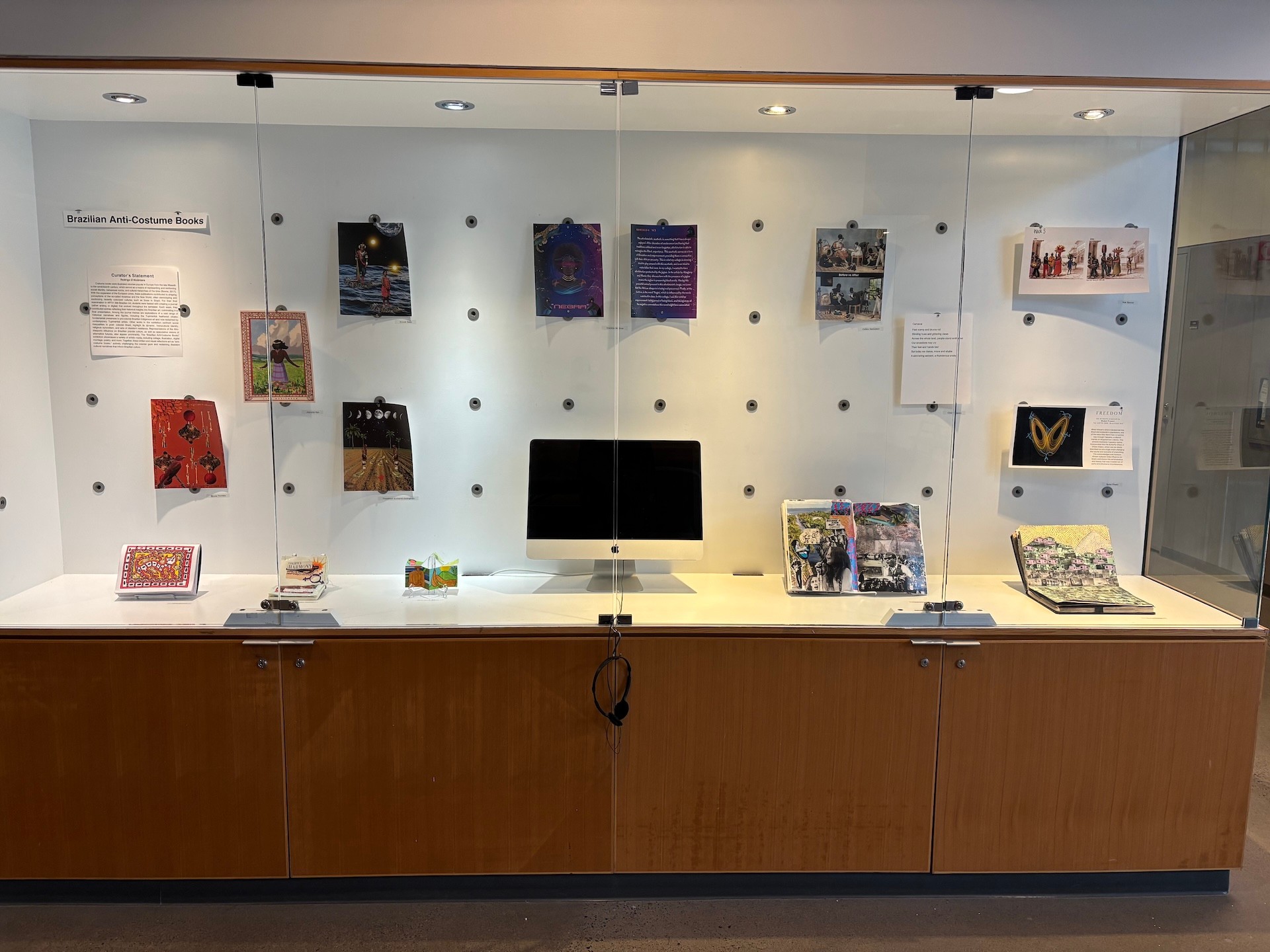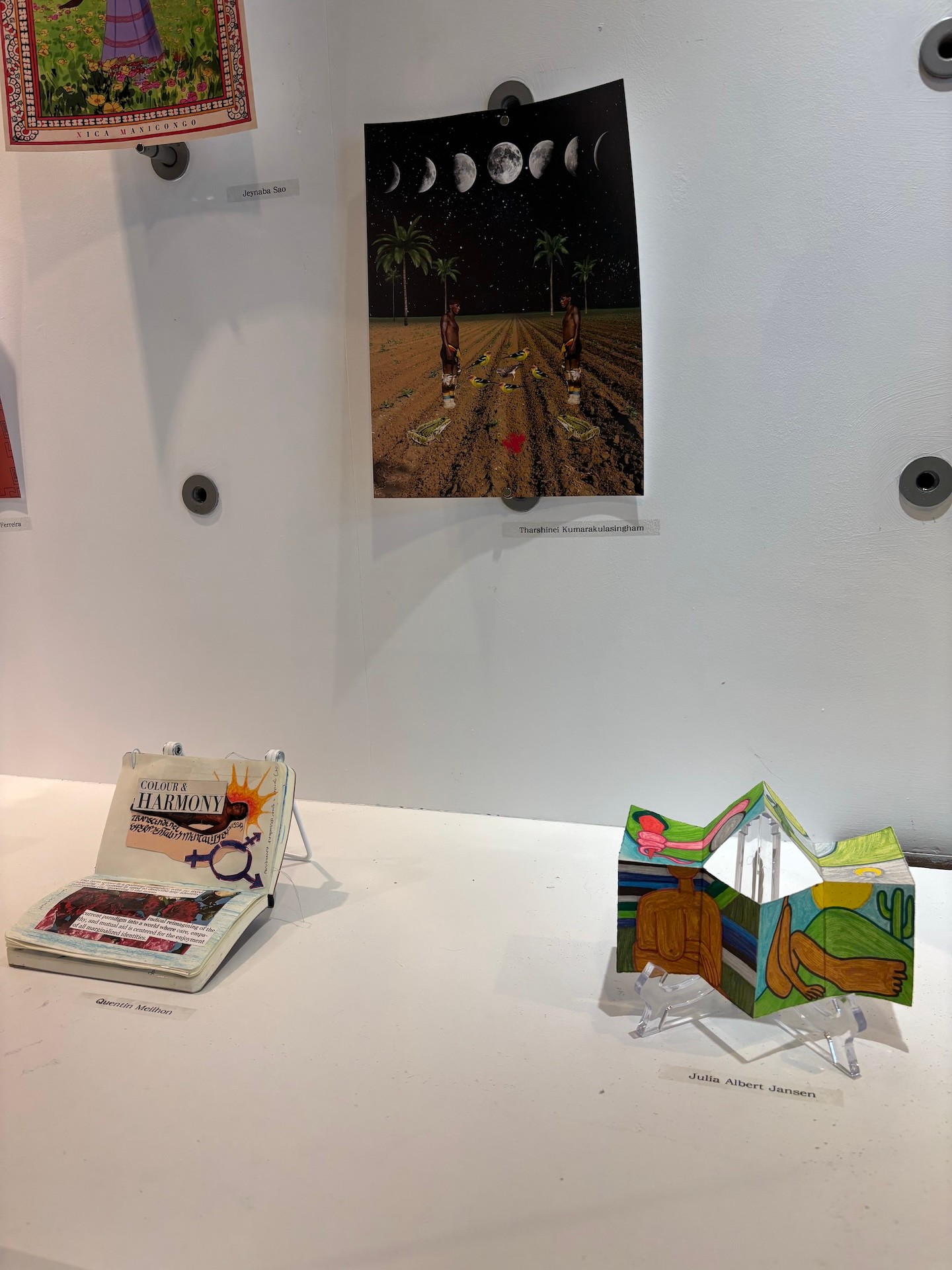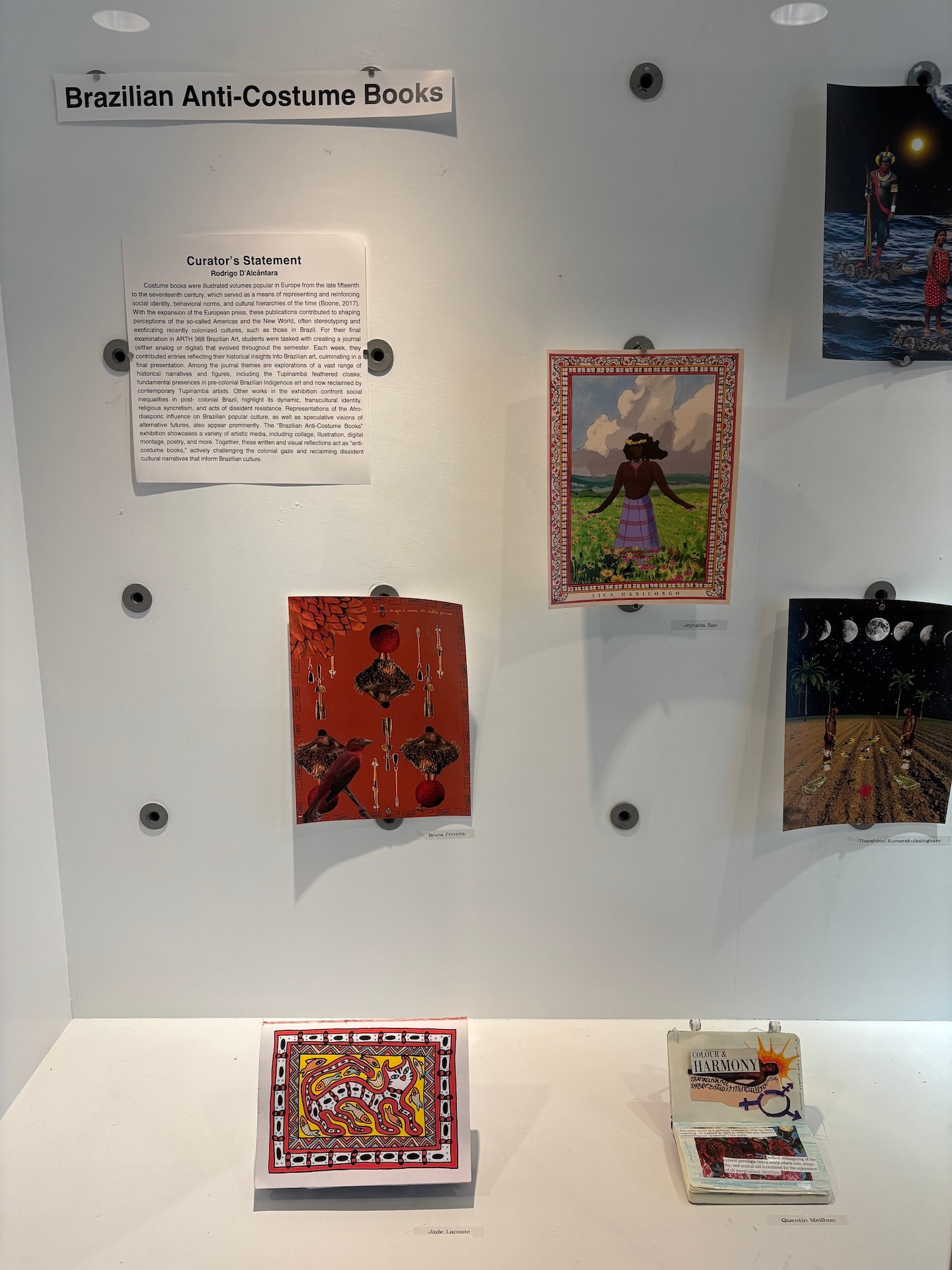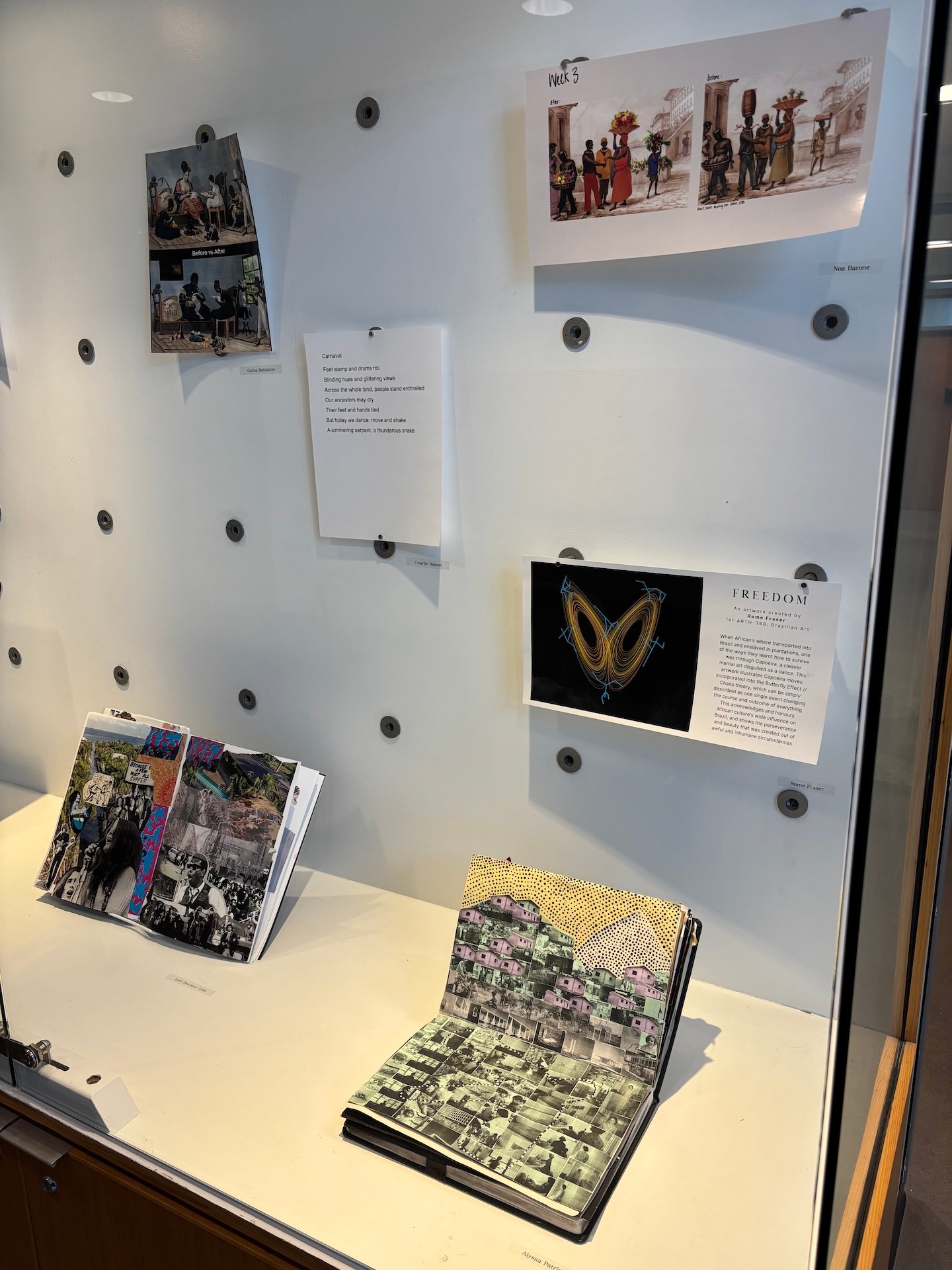Brazilian Anti-Costume Books - Winter 2025
Curated by Rodrigo D'Alcântara
Costume books were illustrated volumes popular in Europe from the late fifteenth to the seventeenth century, which served as a means of representing and reinforcing social identity, behavioral norms, and cultural hierarchies of the time (Boone, 2017). With the expansion of the European press, these publications contributed to the shaping perceptions of the so-called Americas and the New World, often stereotyping and exoticizing recently colonized cultures, such as those in Brazil. For their final examination in ARTH 368 Brazilian Art, students were tasked with creating a journal (either analog or digital) that evolved throughout the semester. Each week, they contributed entries reflecting their historical insights into Brazilian art, culminating in a final presentation. Among the journal themes are explorations of a vast range of historical narratives and figures, including the Tupinambá feathered cloaks; fundamental presences in pre-colonial Brazilian Indigenous art and now reclaimed by contemporary Tupinambá artists. Other works in the exhibition confront social inequalities in post-colonial Brazil, highlight its dynamic, transcultural identity, religious syncretism, and acts of dissident resistance. Representations of the Afro-diasporic influence on Brazilian popular culture, as well as speculative visions of alternative futures, also appear prominently. The "Brazilian Anti-Costume Books" exhibition showcases a variety of artistic media, including collage, illustration, digital montage, poetry, and more. Together, these written and visual reflections act as "anti-costume books," actively challenging the colonial gaze and reclaiming dissident cultural narratives that inform Brazilian culture.







